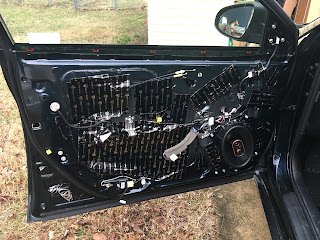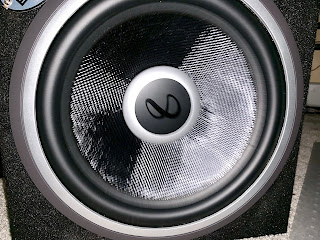Rear Sway Bar for 2016 Avalon and Driving Impressions
Avalon, Camry Sway Bar Install
The RSB part number for the camry, avalon and avalon touring is 4881206210:I used this sway bar from progress which is significantly heavier and stiffer despite being only 3 mm larger than stock. (Check out Progress Install Instructions)
The bar installed fairly easily. I woke up early on an early spring morning, fired up the air compressor, got the Aircat ready to break free any stuck bolts, and to my great surprise everything came apart with hand tools and without drama.
I jacked the car up with a floor jack then laid it down on a few rows of bricks to put some load on the suspension. Taking apart the links needed a 14mm and a 6mm Allen wrench, break it free first with the 14 then use the 14 plus six to get it all the way off. I would recommend taking a few pictures of the oem sway bar in place to get an idea of how the new one will be oriented.
Then there are the sway bar mounts which are also 14mm IIRC and they too came off without incident. After unhooking some of the bottom air deflectors I took the sway bar out which was somewhat difficult. This part would be easier with a lift as you can maneuver the sway bar folds above the exhaust.
Putting the new sway bar back in place is difficult for the same reason, I ended up jacking the car up all the way my floor jack would go and using the extra room to finagle the new sway bar in place.
After I used the supplied grease on the poly bushings, I tightened up everything to torque which is I believe 34 pounds/ft for the sway bar links and 28 pounds feet for the sway bar mounts. I used threadlocker blue for the mounts and used some of the grease on the end links threads, but threadlocker blue would also work well, the idea being that we want to keep away corrosion. I am going to recheck the torque of the bolts with my cheap harbor freight torque wrenches after a month.
Disclaimer: Please do not refer to this as an install guide, please consider any modification of a car for yourself.
Driving Impressions:
After driving approximately 500 miles on city streets and highways I have a good amount of data to start making some statements about the improvements in ride.
- Body Roll is significantly reduced. You will notice centripetal force before you notice your rear rolling which is important because previously the back end had a bit too much body roll.
- The Toyota Avalon with larger Rear Sway Bar feels more planted at high speed.
- e.g. being passed by large trucks moving fast or in opposite directions doesn't cause your car to rock back and forth
- cross wind does not affect the car nearly as much, you can still hear it but you don't have change steering for it.
- Tightness of the rear suspension is improved. Feels more solid.
- NVH is interesting.
- I think the polybushes transmit more feedback especially over sharp bumps or speed bumps.
- The suspension travel may be controlled slightly so you may feel slightly more of the road
- However, it doesn't really transmit more NVH.
- The steering is crisper, especially on sport mode through high speed sweeping turns such as the infamous "S-Curves" on the National Beltway the steering is almost too sharp and too quick but presents itself in a progressive manner.
- Overall it's still an Avalon but you can corner at much higher speeds at least 10-20mph faster before you feel any body roll and it improves the steering.


What is NVH? I'm looking to do this upgrade and your experience has been invaluable. Thanks.
ReplyDeleteI think it refers to Noise, Vibration and Harshness.
DeleteThanks for the explanation. Much appreciated.
Delete